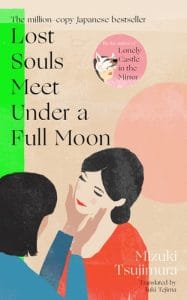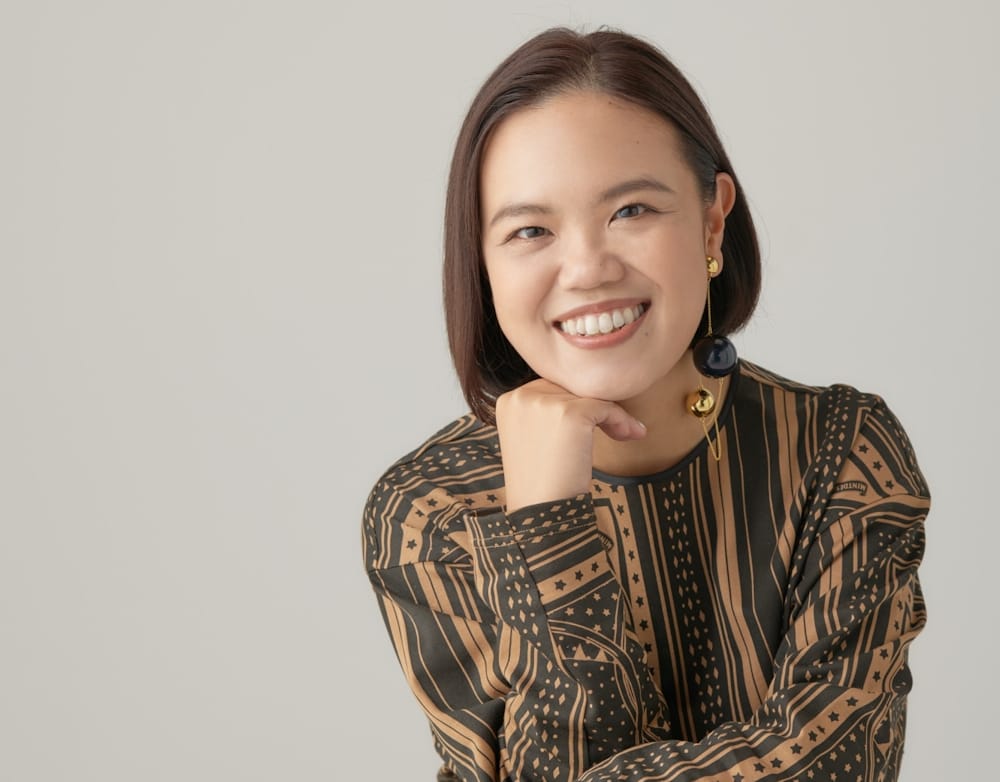From the look of the cover design and the description, readers may think that Mizuki Tsujimura’s novel Lost Souls Meet Under a Full Moon is yet another example of Japanese healing (or comfort) fiction. Most Japanese healing novels are slim with an inviting cover in soft pastels. The stories center around lost individuals who hope to find happiness in their unfulfilling lives. And they often make use of magical realism. Tsujimura is one of Japan’s most highly-regarded mystery and fantasy writers and her best-known novel in English is the young adult fantasy Lonely Castle in the Mirror. Her entry into healing fiction makes sense, yet the beloved and award winning author’s book is different and more layered than stereotypical healing novels, as well as physically more substantial at almost 300 pages in Yuki Tejima’s English-language translation.
Lost Souls Meet Under a Full Moon begins with a few chapters that seem unrelated except for the appearance of one teenage boy. In each, the teenager Ayumi leads individuals to a hospital courtyard and makes arrangements for them to meet with someone who had died. These arrangements are usually at the request of the person who is still alive. In each connection with the deceased, Ayumi explains that he and the living person will go to a five-star hotel and meet the deceased in a room there. This meeting with the deceased can only happen once and likewise the deceased can never meet again with someone who is still alive. And these meetings are best carried out during a full moon.
In the book’s first chapter, a young woman named Minami wishes to connect with a deceased television star named Saori. Minami is surprised that the go-between, Ayumi, is so young:
Wading through the crowd, I thought about how we must look together and felt increasingly self-conscious. A good-looking teenager who I was sure would fall in the ‘hot’ category in the eyes of his peers, walking next to a plain woman about ten years his senior. I was still in my twenties, but to him I was probably as good as middle-aged. Mature was the word people often used to describe me, a term disguised as a compliment that only reminded me that I looked old for my age.
Minami has some confidence issues she wants to thank Saori for helping her begin to resolve. Saori defied the odds and gained great fame after a difficult childhood, only to die young from a heart attack.In another chapter, fifty-year old Yasuhiko is skeptical when his mother is ill and asks him to find a go-between for after she dies:
When she first mentioned the go-between, I was concerned first, surprised second. Had the disease caused some mental impairment? Was she suddenly showing signs of dementia? Why else would she prattle on with this nonsense? Under normal circumstances, I would have laughed off her story.
Ayumi makes the arrangements and mother and son speak together more than they ever did when Yasuhiko’s mother was alive. When he asks his mother why she called him through the go-between, she won’t say except that she wants him to look after the family.
The novel continues in the same fashion for several chapters, telling stories through the perspective of the people connecting with the deceased.

The idea of a fictional situation that allows the living and the dead to interact has appeared in other Japanese healing fiction. Toshikazu Kawaguchi’s Cafe series, which begins with Before the Coffee Gets Cold is about a cafe that allows its patrons to jump forward or backward in time. In Sanaka Hiiragi’s The Lantern of Lost Memories, the dead can revisit one day from their lives before they pass into the afterlife. Even in Hisashi Kashiwai’s The Kamogawa Food Detectives, a certain food can help someone who is mourning reclaim a moment with someone they loved without any supernatural help. But in each of these novels, the connection with the supernatural world is the main point of the stories. Lost Souls Meet Under a Full Moon is more layered than that and that becomes apparent by the fifth chapter when the focus of the books changes.
Now the story revolves around Ayumi, and suddenly it’s apparent how the first four chapters connect. We learn through backstory in this chapter how Ayumi became the go-between. He had been orphaned when his parents died under vague circumstances, and went to live with his extended family. He didn’t know that his grandmother had been a go-between for decades and learns about it when his grandmother’s health is failing and she’s in the hospital. When she asked Ayumi to take over as a go-between, he didn’t believe her at first:
He could tell from her eyes that she wasn’t kidding. More to the point, she had never said anything about this before. Though she came from a family of psychics and fortune-tellers, she had always acted as though it had nothing to do with her. Ayumi had grown up hearing that fortune-telling was nothing more than a family business, not unlike other professions, and his grandmother had never shown any signs of having supernatural abilities.
Ayumi also discovers, through discussions with his grandmother, how his parents died and why it’s important to carry on the family tradition of connecting the living to the deceased.Lost Souls Meet under a Full Moon enjoyed great success in Japan when it was published fifteen years ago. It was even adapted as a feature film. The story doesn’t end with the book: there’s a sequel—How to Hold Someone in Your Heart—on its way.


You must be logged in to post a comment.